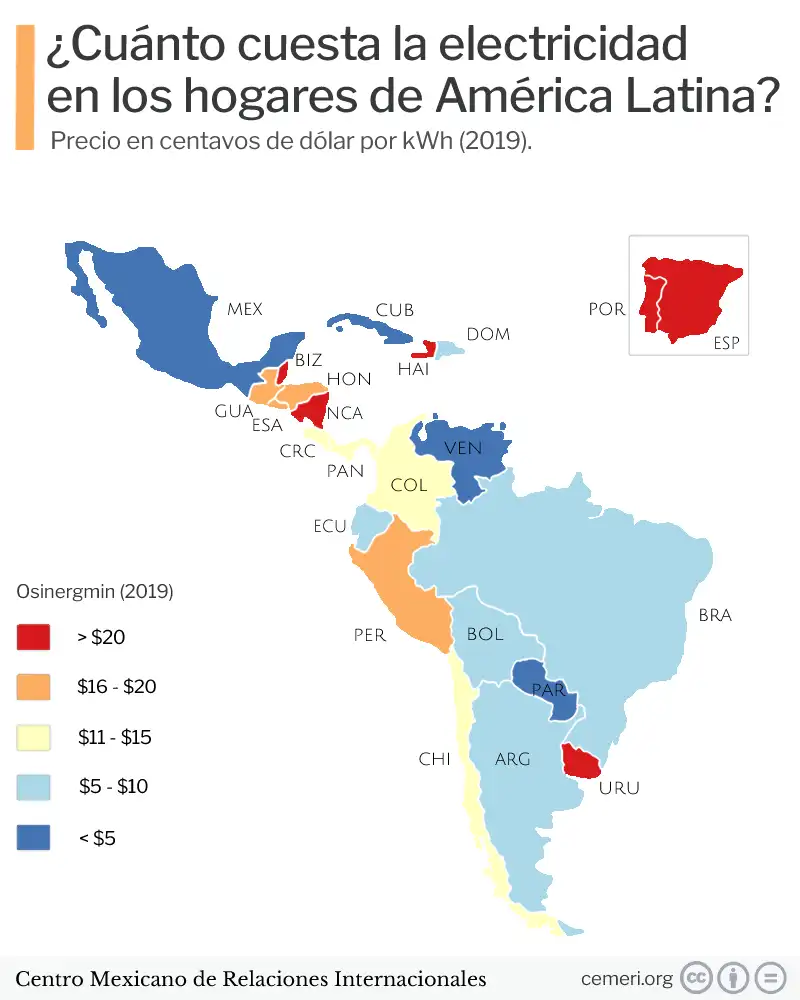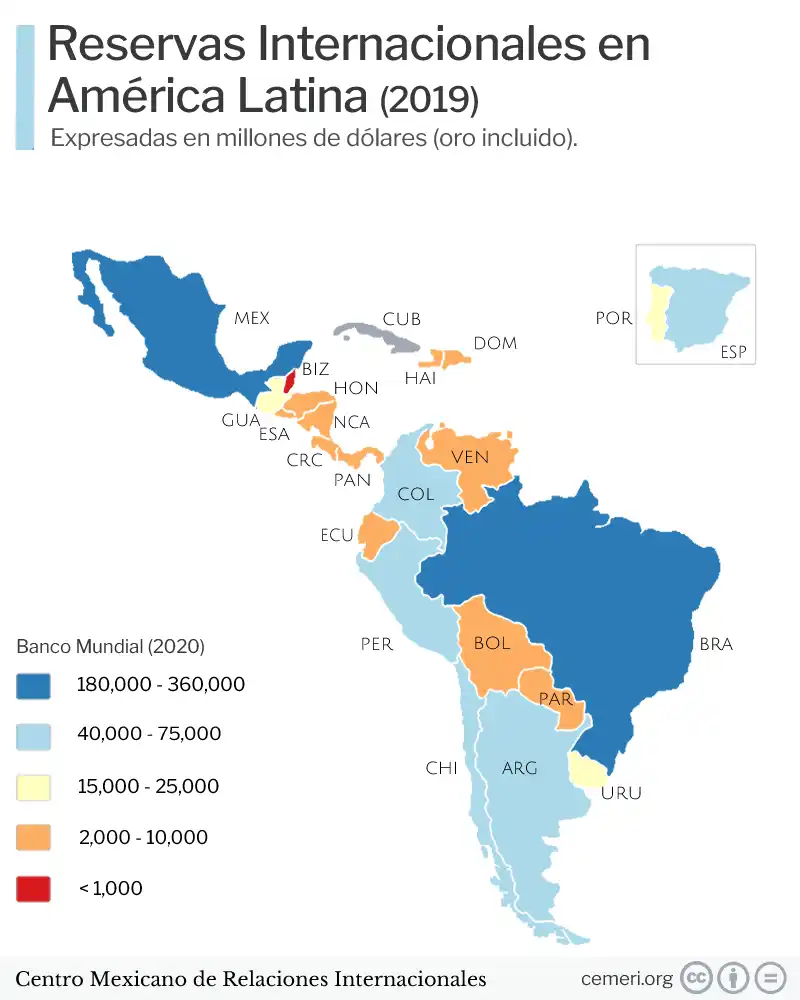Map
Luis Salgado
Electricity price in Latin America
- Latin American governments subsidize fuel and electricity.

As can be seen, in Latin America electricity prices are relatively low, at least compared to the world average.
Governments in Latin America subsidize fuel and electricity for many reasons: to help mitigate the impact on vulnerable consumers of high energy prices, curb inflation, promote economic competitiveness, or in the case of many oil industries and gas producers, to distribute the country's resource wealth to the public. However, subsidies often have unintended adverse effects on a country's economy, its energy sector, and the environment.
For starters, subsidies are expensive. Energy subsidies in Latin America cost an average of $84 billion dollars a year. Fuel subsidies made up about 63% of the total and were highly concentrated in a small group of oil and gas producing countries. Here, fuel prices were typically frozen and subsidies ranged from 1.1% of national GDP to 9.4%. Electricity subsidies, on the other hand, were of more limited value, but were more widespread throughout the region.
This level of spending is difficult to sustain, particularly for countries facing fiscal constraints. In these cases, subsidies can contribute to debt accumulation and put pressure on a country's balance of trade and balance of payments. It is also important to note that subsidies can divert public spending away from sectors such as health, education, and infrastructure.
When energy companies absorb losses from undervaluing fuels or electricity, subsidies also threaten the sustainability of the sector. Subsidies result in lower profit margins, lower efficiency, and greater uncertainty for companies, which can lead to chronic underinvestment in the sector, as is the case in Venezuela.
Subsidies also harm the environment. Cheap fossil fuels distort the efficient allocation of resources by artificially promoting energy consumption and reducing incentives to invest in renewable energy. Excessive fuel consumption leads to elevated emissions, causes more deaths from air pollution, and exacerbates other negative externalities associated with increased vehicle use.
Finally, energy subsidies are an inefficient way of providing social protection. On average, for every US$10 spent on energy subsidies in Latin America, only US$1 reaches the poorest 20% of households (Robles, 2015). The rest goes to higher income groups who tend to have more cars and appliances. This cost is higher than the more targeted social programs implemented in the region, such as cash transfers, which cost $2 USD for each one transferred to the poorest households.
Given the onerous consequences associated with energy subsidies, they are difficult to justify. Latin American countries are once again adjusting to a world of lower energy prices. While removing subsidies can be politically contentious, the current environment of low prices and fiscal pressures facing many Latin American countries, particularly oil producers, present an opportunity for reform.
Electricity prices in Latin America
| State | Electric rate - kWh 2019 (dollar cent) |
|---|---|
| Venezuelan | $0.20 |
| Cuba | $0.80 |
| Paraguayan | $2.79 |
| Mexico | $4.60 |
| Argentine | $7.09 |
| Ecuador | $7.23 |
| Brazil | $8.26 |
| Dominican Republic | $8.80 |
| Bolivia | $10.54 |
| Columbia | $12.23 |
| Costa Rica | $14.27 |
| Panama | $14.35 |
| Chili | $15.01 |
| Peru | $16.56 |
| Guatemalan | $17.95 |
| Honduras | $20.60 |
| El Salvador | $20.77 |
| Nicaragua | $21.80 |
| Belize | $22.60 |
| Uruguay | $23.08 |
| Portuguese | $26.00 |
| Spain | $27.50 |
| Haiti | $28.00 |
Latin America can move towards more stable fuel and electricity pricing while protecting the poor. International experience shows that successful subsidy reform requires an understanding of the welfare effects of subsidy removal on key stakeholders and taking action to address them.
Sources
BNamerica (2019) Precios de la electricidad en latinoamérica. Consultado el 15 de noviembre de 2020 en: https://www.bnamericas.com/es/noticias/precios-de-la-electricidad-en-latinoamerica-comparacion-de-paises
Robles, M., M. G. Rubio, and M. Stampini. 2015. Have Cash Transfers Succeeded in Reaching the Poor in Latin America and the Caribbean? Washington, DC: Inter-American Development Bank.

